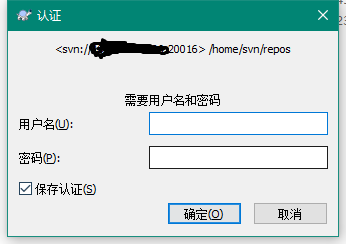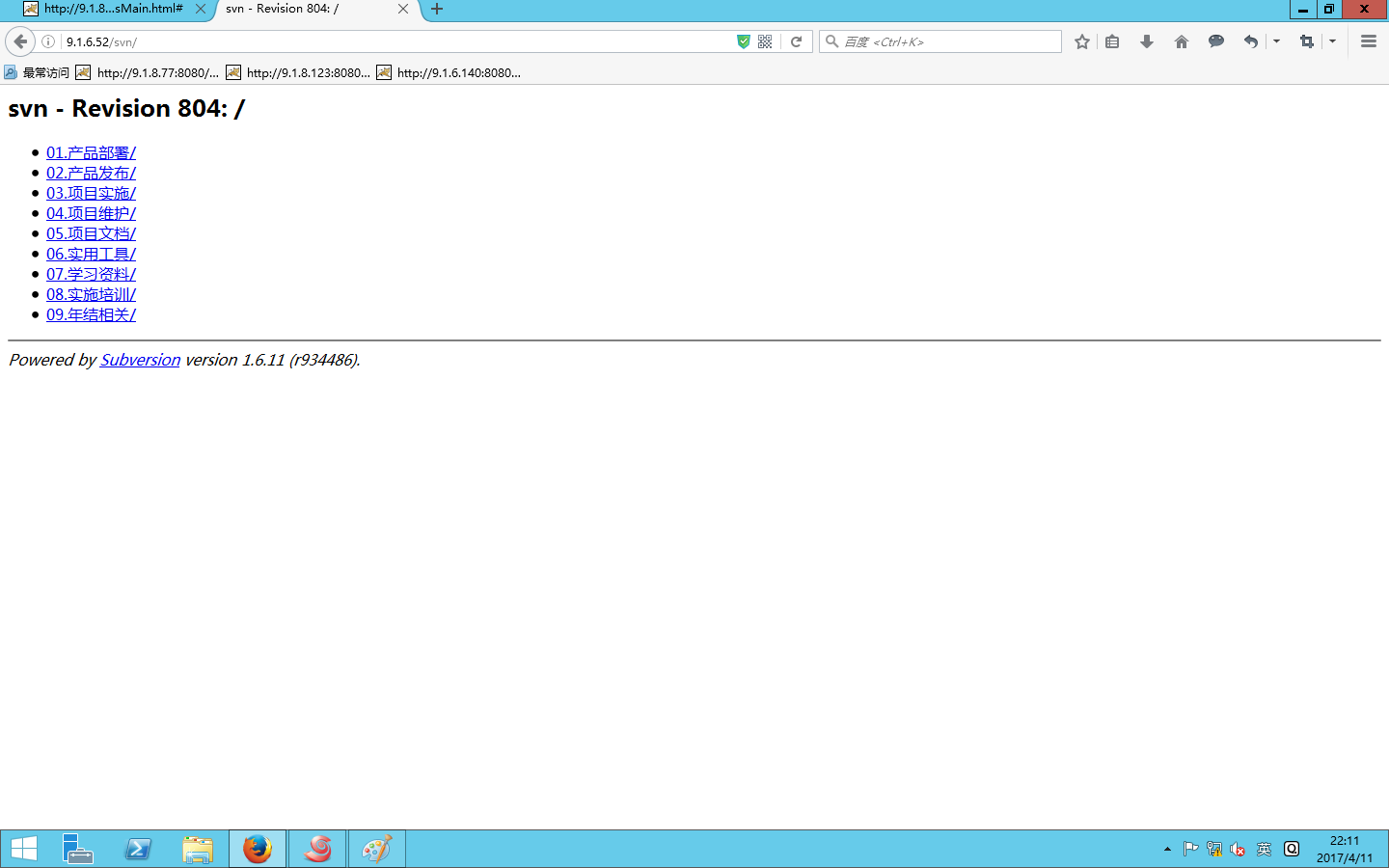
1、检查系统是否已经安装如果安装就卸载
rpm -qa subversion
yum remove subversion
2、安装
yum install subversion
3、建立SVN库
mkdir -p /home/svn/repossvnadmin create /home/svn/repos
执行上面的命令后,自动建立repositories库,查看/home/svn/repos 文件夹发现包含了conf, db,format,hooks, locks, README.txt等文件,说明一个SVN库已经建立。 4、进入/home/svn/repos/上面生成的文件夹下,进行配置 authz文件配置 目的是设置哪些用户可以访问哪些目录,向authz文件追加以下内容
[/]afa4j = rwabs = rw
passwd文件配置 是添加用户名和密码文件,修改如下
[users]# harry = harryssecret# sally = sallyssecretafa4j = afa4jabs = abs123
svnserve.conf 文件配置 配置访问权限
[general]anon-access = noneauth-access = writepassword-db = passwdauthz-db = authzrealm = /home/svn/repos
5、启动svn
/etc/init.d/svnserve start
6、检查进程和监听端口
ps -ef |grep svn |grep -v greproot 23580 1 0 20:10 ? 00:00:00 /usr/bin/svnserve --daemon --pid-file=/var/run/svnserve.pidnetstat -antlp |grep :3690tcp 0 0 0.0.0.0:3690 0.0.0.0:* LISTEN 23580/svnserve
7、修改默认端口为20016 打开
vim /etc/init.d/svnserveargs="--daemon --pid-file=${pidfile} $OPTIONS --listen-port 20016" 找到这一行添加 --listen-port 20016
保存 8、重启service svnserve restart ps -ef |grep svn |grep -v greproot 23580 1 0 20:10 ? 00:00:00 /usr/bin/svnserve --daemon --pid-file=/var/run/svnserve.pid --listen-port 20016netstat -antlp |grep :20016tcp 0 0 0.0.0.0:20016 0.0.0.0:* LISTEN 23580/svnserve
9、TortoiseSVN客户端连接测试 版本库URL svn://xxx.xxx.xxx:20016/home/svn/repos 弹出对话框输入前面添加的用户名密码 
10、SVN开启apache支持
root@ UAT测试环境 @mc1.domain.com:yum install httpd mod_dav_svnroot@ UAT测试环境 @mc1.domain.com:/home/svn/project#rpm -ql mod_dav_svn/etc/httpd/conf.d/subversion.conf/usr/lib64/httpd/modules/mod_authz_svn.so/usr/lib64/httpd/modules/mod_dav_svn.soroot@ UAT测试环境 @mc1.domain.com:/home/svn/project#htpasswd /home/svn/project/password kcwNew password:Re-type new password:Adding password for user kcwroot@ UAT测试环境 @mc1.domain.com:/home/svn/project#cat /etc/httpd/conf.d/subversion.confLoadModule dav_svn_module modules/mod_dav_svn.soLoadModule authz_svn_module modules/mod_authz_svn.so## Example configuration to enable HTTP access for a directory# containing Subversion repositories, "/var/www/svn". Each repository# must be both:## a) readable and writable by the 'apache' user, and## b) labelled with the 'httpd_sys_content_t' context if using# SELinux### To create a new repository "http://localhost/repos/stuff" using# this configuration, run as root:## # cd /var/www/svn# # svnadmin create stuff # # chown -R apache.apache stuff# # chcon -R -t httpd_sys_content_t stuff### DAV svn# SVNParentPath /var/www/svn## # Limit write permission to list of valid users.# # # Require SSL connection for password protection.# # SSLRequireSSL## AuthType Basic# AuthName "Authorization Realm"# AuthUserFile /path/to/passwdfile# Require valid-user# #DAV svn #SVNParentPath /home/svn/project SVNPath /home/svn/project SVNListParentPath on AuthType Basic AuthName "Musingtec SVN Authorization" AuthUserFile /home/svn/project/password # Limit write permission to list of valid users. # # Require SSL connection for password protection. # SSLRequireSSL Require valid-user #
重启apache后以 

这里说明如下
SVNParentPath:支持多个具备相同父目录的Subversion版本库。 SVNPath:只支持一个父目录的Subversion版本库
SVNPath /svn/repository/project1 #如果你想对每个项目单独配置,使用该项
SVNParentPath /svn/repository #设定一个根,所有项目均放在此目录下
并且, 如果设置为SVNParentPath .....,当访问 . 必须接着输入 ..
转自 apache2 里面的svn配置 <Location /svn/repository> DAV svn SVNPath /svn/repository #SVNParentPath /svn/repository #SVNListParentPath on
(此处配置你的版本库根目录) --注意这里不要是svnpath
AuthType Basic #(连接类型设置 基本验证) AuthName "Hello welcome to here"
(此处字符串内容修改为提示对话框标题)
AuthUserFile /svn/repository/conf/passwd
(此处修改为访问版本库用户的文件, 用apache 的htpasswd命令生成)
AuthzSVNAccessFile /svn/repository/conf/authz #(此处修改为访问版本库权限的文件) Require valid-user #("Require valid-user"告诉apache在authfile中所有的用户都可以访问。 </Location>
[groups] Admin=usr1 #/*这个表示admin群组里的成员 user1,user2 #Develop=u1, u2
#/*这个表示Develop群组里的成员 u1,u2 [repository:/] #/*这表示,仓库www的根目录下的访问权限 user1 = rw #/www仓库user1用户具有读和写权限 user2 = r #/ www仓库userl用户具只有读权限 #@develop=rw #/*这表示 群 develop的成员都具有读写权限 [/] #/*这个表示在所有仓库的根目录下- = r #/*这个表示对所有的用户都具有读权限